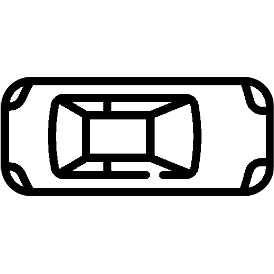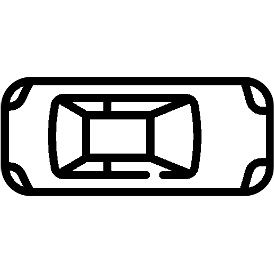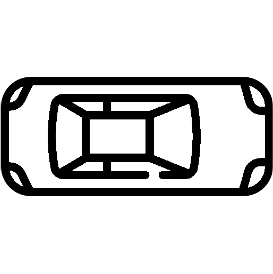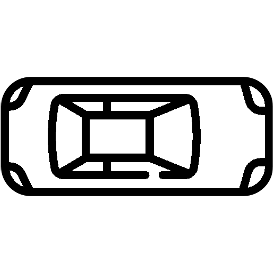A distributed control of vehicle platooning is referred to as distributed consensus (DC) since many autonomous vehicles (AVs) reach a consensus to move as one body with the same velocity and inter-distance. For DC control to be stable, other AVs' real-time position information should be inputted to each AV's controller via vehicle-to-vehicle (V2V) communications. On the other hand, too many V2V links should be simultaneously established and frequently retrained, causing frequent packet loss and longer communication latency. We propose a novel DC algorithm called over-the-air consensus (AirCons), a joint communication-and-control design with two key features to overcome the above limitations. First, exploiting a wireless signal's superposition and broadcasting properties renders all AVs' signals to converge to a specific value proportional to participating AVs' average position without individual V2V channel information. Second, the estimated average position is used to control each AV's dynamics instead of each AV's individual position. Through analytic and numerical studies, the effectiveness of the proposed AirCons designed on the state-of-the-art New Radio architecture is verified by showing a $14.22\%$ control gain compared to the benchmark without the average position.
翻译:对车辆排排的分布式控制被称为分布式共识(DC),因为许多自治车辆(AVs)已达成共识,以作为同一体体移动,速度和间距相同。为了使DC控制稳定,其他AVs的实时位置信息应通过车辆对车辆的通信(V2V)输入每个AV控制器。另一方面,太多的V2V连接应同时建立并经常重新训练,造成频繁的包装丢失和通信时间较长。我们提议了一个新的DC算法,称为超空共识(Aircons),这是一个联合通信和管制设计,有两个关键特征,以克服上述限制。首先,利用无线信号的超定位和广播属性使所有AVs的信号与参加AVs的平均位置的具体价值成正比,而没有单独的V2V频道信息。第二,估计的平均位置用于控制每AV的动态,而不是每个AV的个人位置。我们提议了一个叫作超空共识(Aircons),即联合通信和控制设计了两个关键特征,以克服上述限制。首先,利用无线信号的超位和播放特性使AVsal-lax平均控制结构显示新获得标准。












